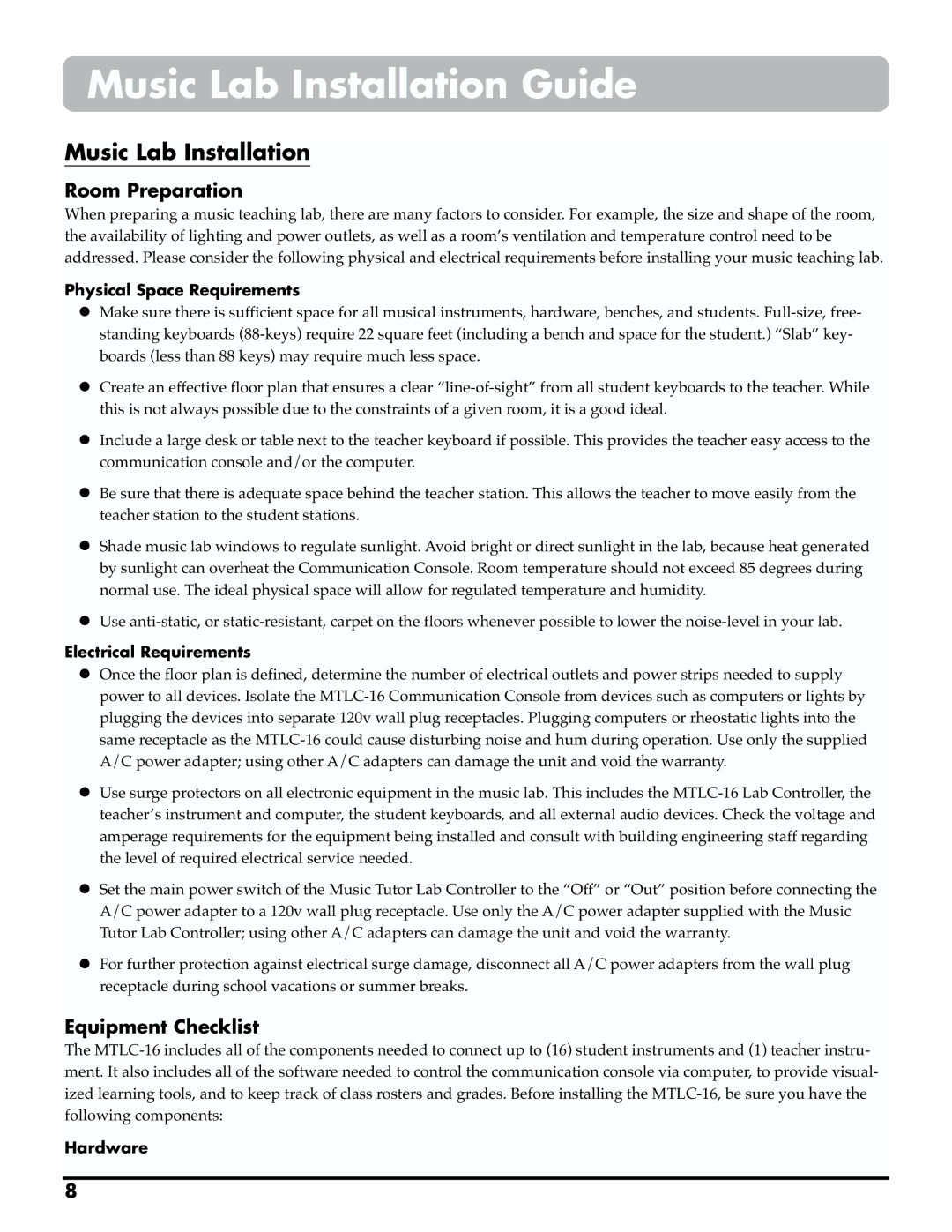
Music Lab Installation Guide
Music Lab Installation
Room Preparation
When preparing a music teaching lab, there are many factors to consider. For example, the size and shape of the room, the availability of lighting and power outlets, as well as a room’s ventilation and temperature control need to be addressed. Please consider the following physical and electrical requirements before installing your music teaching lab.
Physical Space Requirements
•
•
•
•
•
•
Make sure there is sufficient space for all musical instruments, hardware, benches, and students.
Create an effective floor plan that ensures a clear
Include a large desk or table next to the teacher keyboard if possible. This provides the teacher easy access to the communication console and/or the computer.
Be sure that there is adequate space behind the teacher station. This allows the teacher to move easily from the teacher station to the student stations.
Shade music lab windows to regulate sunlight. Avoid bright or direct sunlight in the lab, because heat generated by sunlight can overheat the Communication Console. Room temperature should not exceed 85 degrees during normal use. The ideal physical space will allow for regulated temperature and humidity.
Use
Electrical Requirements
•
•
•
•
Once the floor plan is defined, determine the number of electrical outlets and power strips needed to supply power to all devices. Isolate the
Use surge protectors on all electronic equipment in the music lab. This includes the
Set the main power switch of the Music Tutor Lab Controller to the “Off” or “Out” position before connecting the A/C power adapter to a 120v wall plug receptacle. Use only the A/C power adapter supplied with the Music Tutor Lab Controller; using other A/C adapters can damage the unit and void the warranty.
For further protection against electrical surge damage, disconnect all A/C power adapters from the wall plug receptacle during school vacations or summer breaks.
Equipment Checklist
The
Hardware
8
